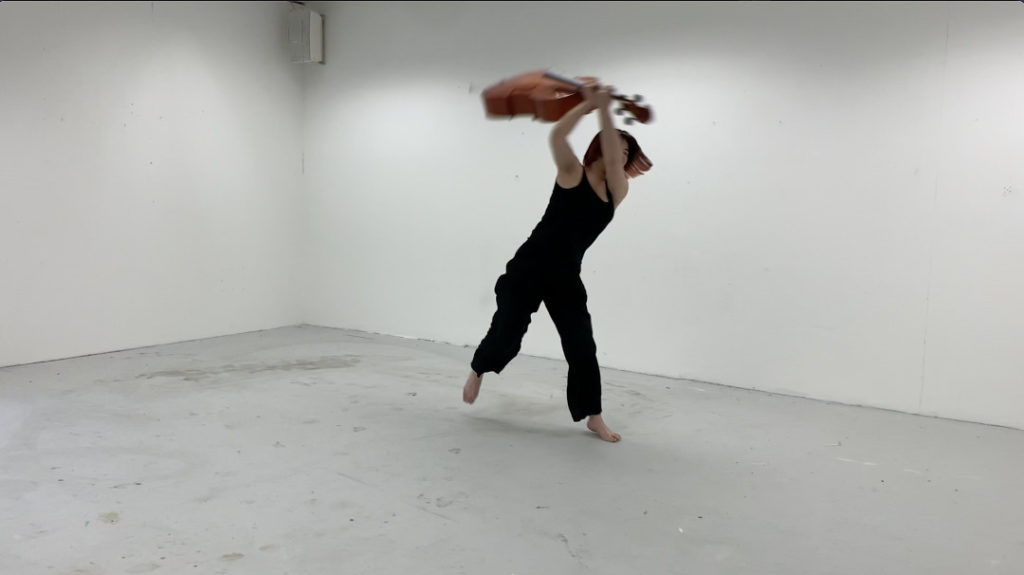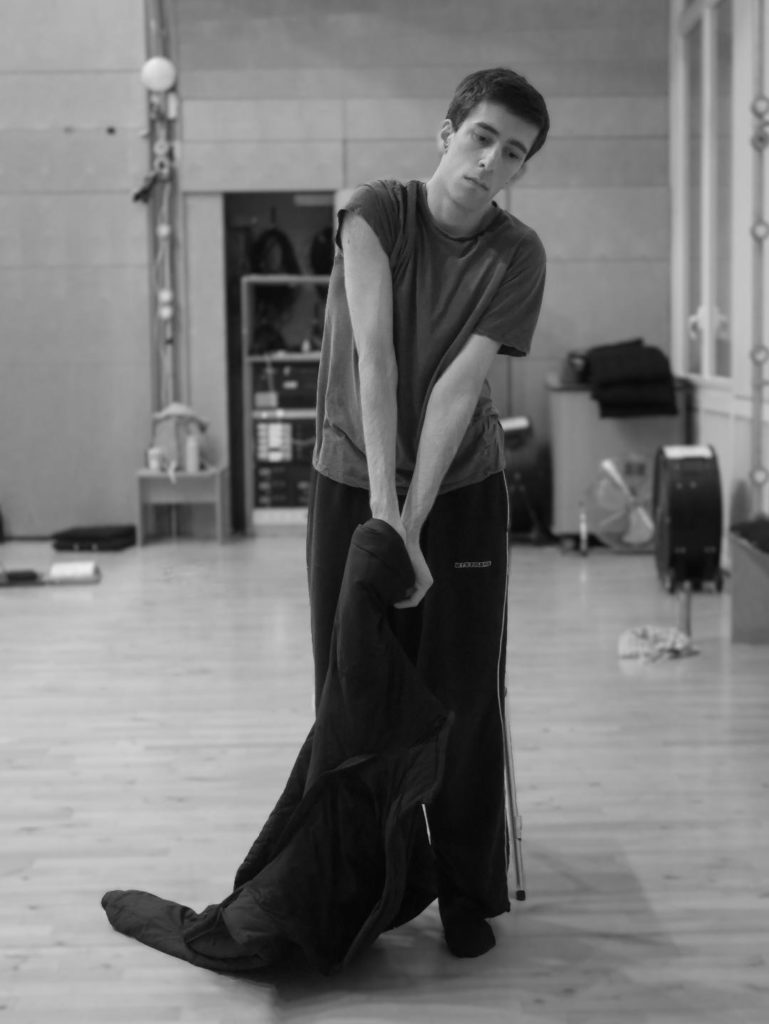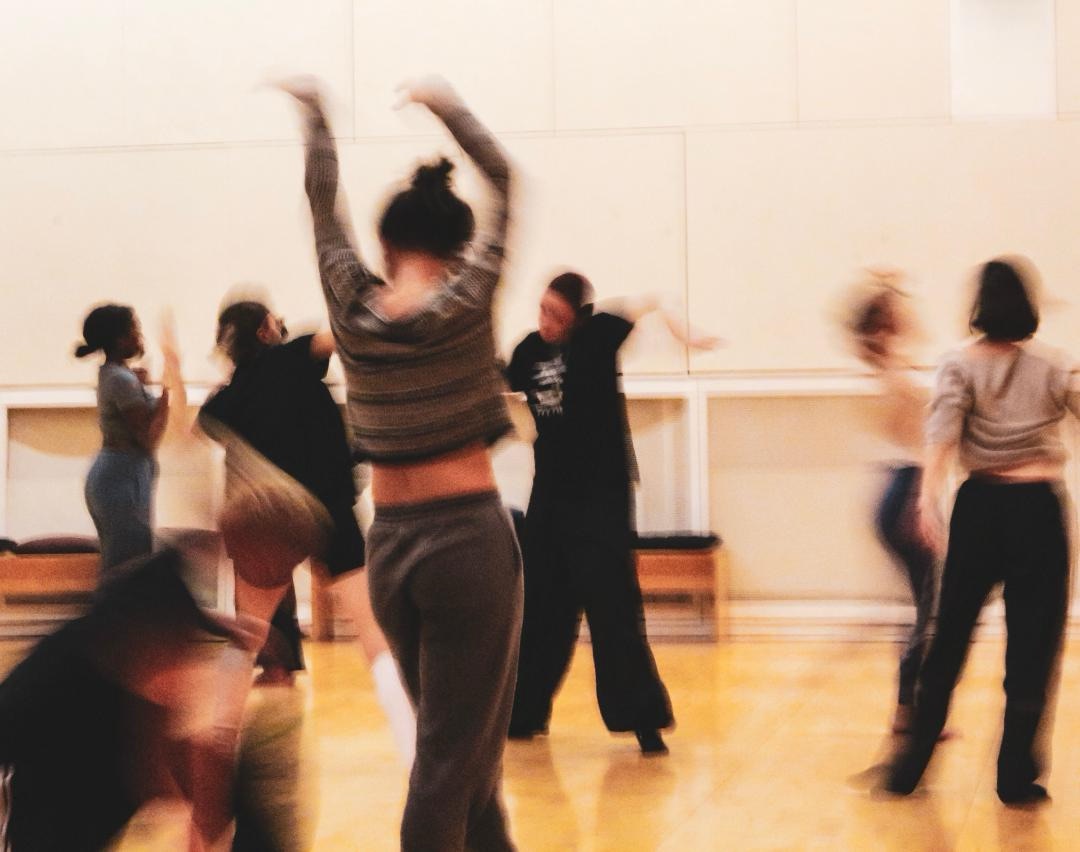Words by angel dust.
It is a Monday evening, it’s been less than 48 hours since I arrived back to London after spending two months in Athens. The change of rhythm feels simultaneously right and wrong. I am in certain ways feeling like myself again (a home of some sort) but I know better than to be fooled by such concepts, for “myself” is in a constant process of leaving from and arriving at itself, resulting in what is more of a fleeting kaleidoscope rather than a monolith of identity. One of “myselves” dances, moves and is moved by other moving bodies and a lot of this happens at Siobhan Davies Studios where I attended Next Choreography (NC) in 2019/2020. Since then, I feel like the stars have shifted a bit closer towards me.
Next Choreography is a programme for creative young people between the ages of 16-25, that would like to investigate choreographic thinking and making irregardless of having prior dance experience. The programme’s interdisciplinary and collaborative approach invites experimentation, taking risks and nurturing the participants’ ideas and relationship with movement. NC has been pivotal for two other members of the Dance Art Journal, Katie and Stella who both attended the programme before me. Siobhan Davies Studios has been a creative home for us in that sense, so it was a great pleasure that we were invited to write about the current cohort of the programme.
And so, I felt very excited that on this Monday evening I was joined by three current participants to chat about their experiences of Next Choreography, their proximities to the stars and the projects they are working on for Next Festival taking place at the studios on the 23 March. Rach Coleman, Lin Ji and Billy Gigurtsis, prior to NC have all had no formal dance training but all shared an inclination towards the physicality of expression whether that was through poetry, theatre or live art more broadly, and a curiosity as to what wearing a choreographer’s hat would feel like.



Angel: how have your perceptions of dance, choreography and the world more broadly been impacted by the Next Choreography programme?
Rach: I have an immediate thought to share that connects with Billy, back in January we had a conversation after the winter break and Billy asked me how I was finding the programme and we had this hilarious moment where we both said we didn’t really know what choreography was and how that slightly went against the grain of our expectations of when we first started the programme three and a half months before. I guess this is what I am currently sitting with, that this thing we call choreography is as loose as this thing we call dance. And it’s much more about finding an approach/practice that arrives in the world the way you need it or want it to… And then I feel more affirmed than ever that movement is a way to meet people, the relationships we have as a group are incredibly intimate. There is something about that which feels like a miracle!
Lin: I can really relate to what Rach said. I had not much of an idea what community was before I joined NC, but going to Siobhan Davies Studios I found this community and a sense of security or belonging attached to it. We had some workshops looking at how movement and dance can facilitate and create community. I also feel like I am more confident in myself and in my body after this programme. I realised everyone has different bodies. I am autistic and I was really afraid to tell people that I was and to move in front people. But now I am more confident in my body, and in being autistic or being dyspraxic. This is now something I want to express more in my practice.
Billy: this course has helped me understand what types of dance and choreography I like more. But choreography is such a broad area and there are so many different paths you could take with it, it’s almost paralysing!
Angel: what is your project idea and how was the devising process for you?
Lin: I am working on the vitality of life from an autistic perspective. This kind of exhaustion/frustration, the meeting of obstacles in relation to movement. You fall so many times but you keep standing up, you keep going forwards. I have been doing exercises from the workshops we did and I am practising improvisation and trying to repeat one movement again and again and get something out of the repetition.
Billy: my piece is about taking off your clothes and putting them back on. I am gonna be doing this over and over again in a score. I am interested in the witness relationship and how a simple action can put the awkwardness back into the audience. The devising process is and always will be stressful! It’s a lot of hard work and pressure.
Rach: my idea is about this preoccupation I have with small places and big people. I am curious how can our collective be a village and what does our village look like? I am tying that with ideas of co-creating mythologies of ourselves and what we have done together. The piece will be a series of motifs that emerge and disappear throughout the evening. It will be something weird and wistful, but I am trying not to think about it too much and just move it!
Angel: what have you found challenging about the programme?
Billy: the first session when we had to get up and dance in front of each other – there were a lot of unknowns!
Lin: I feel like a challenge is to really take in every session’s content and bring that into your own practice. I really want to squeeze out every bit from the workshops!
Rach: for me it is about how I arrive in the space. I have a tendency to be more preoccupied with other people and their ideas than my own and I wanted to use this as an opportunity to front myself as a maker.
The three artists also spoke to me about their tentative relationship with the identity of the “dancer”, the way the programme focused on access, neurodiversity and disability, the struggle of defining dance and choreography and bravery as a sentiment that has been present in the space they have held for each other throughout all of their studio sessions. Their words remind me of the profound experience of allowing others to witness your raw movement and of witnessing other people’s movement in a non judgemental way. The workshops and guest facilitators all add a bit of their own take on where can we source movement from and the intersection of choreography with other creative and social fields. From my memory, every session would open a new door and the sense of novelty was always in the air. The cumulative impact of that was being inspired but also feeling empowered in our bodies and ideas as artists.
I concluded my chat with Billy, Rach and Lin, asking each of them what project they would do if they had an unlimited amount of resources granted to them. The amalgamation of their answers is the storming of the UK parliament by a community of people, governed by the ghost of Pina Bausch, that starts a dance revolution with loads of fireworks, Guy Fawkes style.
And I think that’s what NC is best at doing, expanding the realm of the possible through the means of movement. For me NC revealed how much of my understanding of the world happened through my senses, how the mind is located in the body and how we are constantly engaging in a never ending choreography of our body in relation to everything and everyone else around us. Art stopped being stuck on the walls of the gallery, it grew limbs and freed itself into the streets.
If you want to experience what the NC 2024 cohort has been working on, they will be doing a showcase on Saturday 23rd of March at Siobhan Davies studios and you can find more information and book your ticket by following this link: https://www.siobhandavies.com/next-choreography/
Images by Chen Warner. This article was commissioned by SDS.
